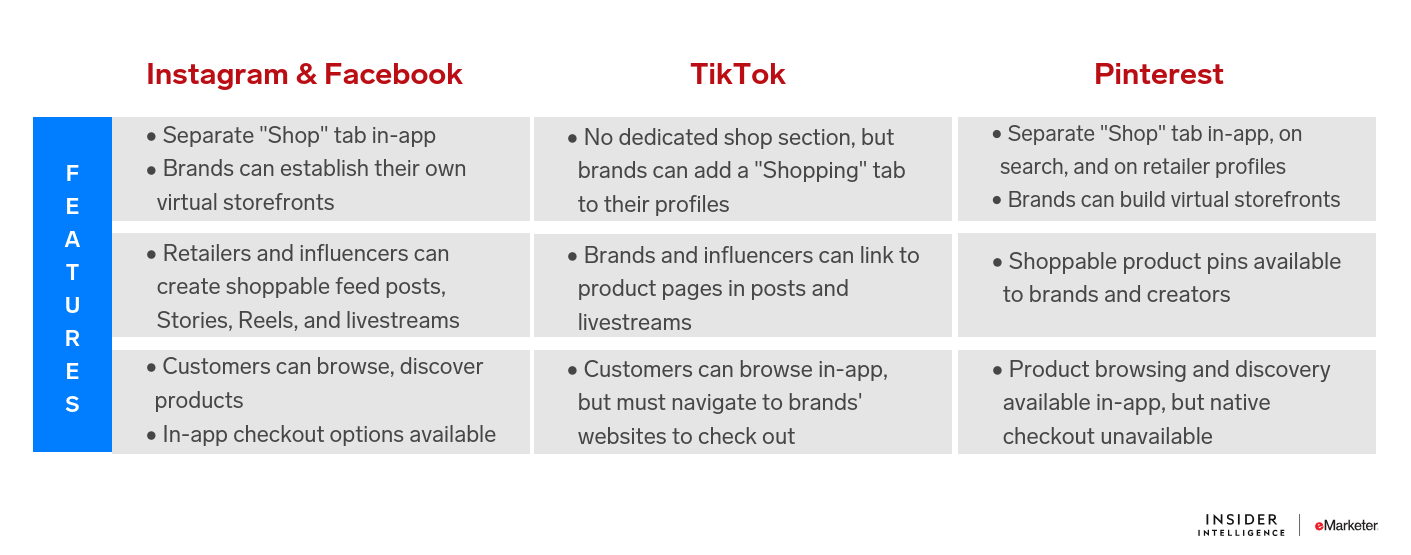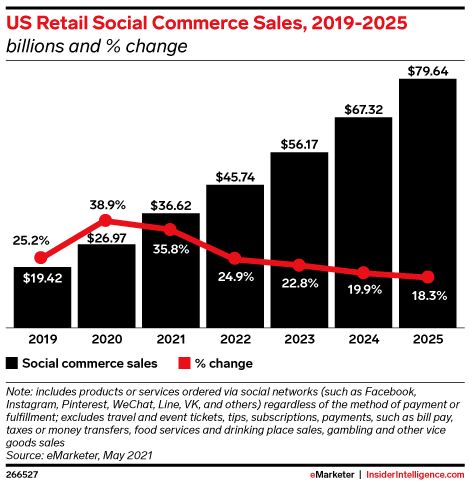Social e-commerce is developing. Currently, mainstream social platforms mainly includeMeta's Instagram and Facebook, TikTok, Pinterest, etc.
After sorting out the e-commerce operations of some mainstream social platforms,EMarketer found that in terms of innovation, Instagram, Facebook, and Generation Z's favorite TikTok are currently leading the way; But platforms such as Pinterest and Twitter are also making every effort to expand their e-commerce capabilities.
Instagram, Facebook, and Pinterest have separate "Store" tabs, allowing sellers to create online storefronts; TikTok does not have a dedicated storefront page, but brands can add "shopping" tags.
EMarketer also found that Instagram and Facebook are leading in features such as in app checkout, but TikTok and Pinterest are leveraging their advantages in product discovery to create value for retailers.

Although many platforms offer some form of shopping content, currently onlyFacebook and Instagram have in app checkout options.
Lack of in app checkout may not necessarily be an agreement between consumers, according toAccording to a survey by Bizrate Insights, 56% of American consumers purchase websites that link to retailers through social media. But eMarketer believes that if there is an in app checkout option, the purchase conversion rate should be higher.
In addition, live shopping is increasingly being used as an entry point for social commerce.Twitter has started testing the live shopping feature. And Pinterest recently launched Pinterest TV.
It should be noted that although48% of American social media users reported shopping through social media in the past year, but according to another survey, social commerce has not yet fully become mainstream.EMarketer predicts that social e-commerce sales in the United States will reach $36.62 billion this yearIt is only one tenth of China's.

Nevertheless, sellers are still enthusiastic about the prospects of social commerce.A study by Harris Poll and Sprout Social found that,Currently, there are73% of companies sell through social media, and it is expected that this number will rise to 79% in the next three years.
EMarketer stated that although social e-commerce has not yet become mainstream, it is still a very valuable tool for brand communication.